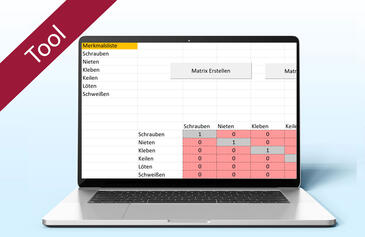
Recognizing the Red Flags of Struggling Projects 13 Signs That Your Project May Be in Trouble

Your project manager misses several status reports, your team is working overtime, or your boss asks you to work smarter, not harder? Then your project may be in trouble! Fergus O’Connell shows you 13 signs, that should raise a red flag.
Management Summary
Als Mitglied erhalten Sie die wichtigsten Thesen des Beitrags zusammengefasst im Management Summary!
Recognizing the Red Flags of Struggling Projects 13 Signs That Your Project May Be in Trouble

Your project manager misses several status reports, your team is working overtime, or your boss asks you to work smarter, not harder? Then your project may be in trouble! Fergus O’Connell shows you 13 signs, that should raise a red flag.
Management Summary
Als Mitglied erhalten Sie die wichtigsten Thesen des Beitrags zusammengefasst im Management Summary!
You’re a project manager running one or more projects; or a manager of project managers. I’m sure you’d like to know – as quickly and as painlessly as possible – if the projects you’re responsible for are in good shape or not.
In a previous article I’ve described "How to assess a project in five minutes". This present article describes some other telltale signs you can look for that might indicate that all is not well on a project.
The only way you can know for sure whether your project is in trouble or not is to (a) have a detailed, properly estimated plan and (b) monitor that plan properly.
The following article contains some of the most common signs I have seen over the years during my time as a consultant and trainer which are guaranteed to raise the hairs on the back of my neck and may be indicative of trouble. You can use this article as a checklist of signs to look out for. If you encounter one of these signs, this article tells you how to correct what’s happening on the project.
First, I will describe the sign. Then, I will give the probability of your project being in trouble. I have graded the probability as follows:
- Certainty – there can be no doubt that the project is in trouble.
- Very high – I’d be very surprised if it wasn’t in trouble.
- High – very likely that the project is in trouble.
- Medium – I’d delve a little deeper to see what’s going on if I were you.
Some of these are not exactly objective or measurable, but in those cases, common sense gives us the reasoning. I will also show what action to take if you encounter the particular situation. The signs are grouped by the three different kinds of stakeholders: the project manager, the team, and superiors including external stakeholders (e.g., a boss (very senior), a project sponsor, or an important stakeholder or customer).
Red Flags – Project Manager Level
Sign 1: No plan
Sign: There is no plan at all. Or a very short / brief / 1-page or so plan.
Probability that the project is in trouble: Certainty. There is no plan – either literally no plan at all or a very dubious plan.
Common sense tells us: "If we fail to plan, we plan to fail". Apparently, it was Benjamin Franklin who pointed this out. If there is no plan it’s hard to see how the project could have any chance of success.
Action to take: Build a detailed, properly estimated plan. There are six easy steps to do that:
- Step 1: What are we trying to do and how will we know when it’s done?
- Step 2: What exactly has to be done?
- Step 3: Who’s going to do that stuff?
- Step 4: Who’s going to make it all happen?
- Step 5: What if something goes wrong?
- Step 6: Can we stop things from going wrong?
Sofort weiterlesen und testen
Erster Monat kostenlos,
dann 24,95 € pro Monat
-
Know-how von über 1.000 Profis
-
Methoden für alle Aufgaben
-
Websessions mit Top-Expert:innen





